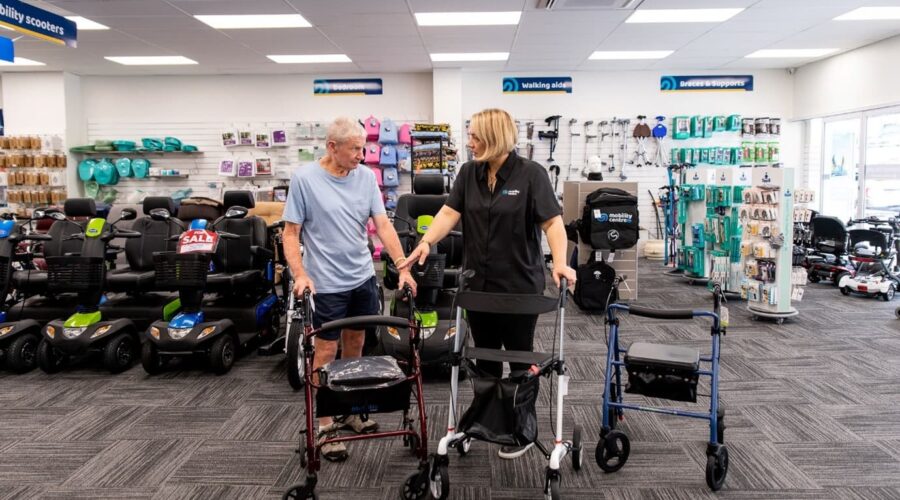Choosing the right walker or walking frame is crucial for individuals who require mobility assistance. These devices provide support, stability, and independence, enabling people to move around safely.
However, with various options available, it’s essential to consider certain factors to ensure the chosen walker or frame suits individual needs. In this guide, we will provide you with top tips for selecting the right walker or walking frame, along with an overview of the different types available.
1. Assess Mobility Needs
Before choosing a walker or walking frame, it’s important to assess the individual’s mobility needs. Consider factors such as balance, strength, and stability. Determine whether a basic walker, rollator, or a more specialised walking frame is required.
- Standard Walker: Standard walkers are simple frames with four legs and no wheels. They offer excellent stability but require lifting with each step.
- Rollator: Rollators are walkers equipped with wheels, hand brakes, and a built-in seat. They provide support, manoeuverability, and the option to sit and rest when needed.
- Knee Walker: Knee walkers, also known as knee scooters, are designed for individuals who cannot bear weight on one leg. They feature a cushioned platform for resting the knee and provide mobility using the other leg.
- Gutter Frame: Forearm walkers, or platform walkers, provide support for individuals with limited hand or wrist strength. They feature forearm supports instead of handgrips and provide stability while allowing the user to bear weight on their forearms.
- Mixed Terrain Walker: Strong and durable, this is ideal for the active person who needs the assurance of a solid frame.
2. Consider Weight and Portability
The weight of the walker or walking frame is an important consideration, particularly if it needs to be transported or lifted frequently. Lightweight and foldable models are ideal for easy portability and storage. Ensure it can be easily lifted and manoeuvred without causing strain or discomfort.
3. Height Adjustability
Look for a walker or walking frame with height-adjustable handles. This feature allows customisation according to the individual’s height, ensuring proper posture and comfort during use. The handles should be at a level where the user’s elbows are slightly bent when gripping them.
4. Stability and Maneuverability
Choose a walker or walking frame with a sturdy and stable construction. It should have a wide base with non-slip rubber tips or wheels for traction and stability on various surfaces. Consider the individual’s environment and whether they require indoor or outdoor use. Some walkers come with swivel wheels or front casters for better manoeuverability.
5. Handgrips and Brakes
Evaluate the handgrips on the walker or walking frame. They should be ergonomic, comfortable to hold, and provide a secure grip. Some models offer padded or contoured handgrips for added comfort. Additionally, check if the walker has brakes that can be easily engaged and released, providing control and safety when walking or standing.
6. Storage and Accessories
Consider the storage capacity of the walker or walking frame. Some models come with built-in storage compartments or baskets for carrying personal items, making them convenient for shopping or outings. Look for additional accessories like trays, cup holders, or walking stick holders that can enhance usability and convenience.
7. Trial and Comfort
It’s advisable to try out different walkers or walking frames before making a final decision. Consider hiring them from Mobility Centre before committing to a purchase. Test the device to ensure it feels comfortable, provides adequate support, and suits the individual’s gait. Adjust the height and experiment with different features to find the most comfortable and suitable option. Read our guides to learn about other mobility solutions.
8. Consult a Healthcare Professional
If you are unsure about the right walker or walking frame for your specific needs, consult a healthcare professional, such as a physical therapist or occupational therapist. They can assess your mobility requirements and provide recommendations tailored to your situation.
By following these top tips, you can select the right walker or walking frame that matches your mobility needs, provides stability, and improves your independence. Remember to prioritise comfort, safety, and suitability for optimal use and mobility support.

